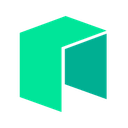-
 Bitcoin
Bitcoin $77,741.2042
-2.10% -
 Ethereum
Ethereum $1,483.7084
-5.24% -
 Tether USDt
Tether USDt $0.9996
0.01% -
 XRP
XRP $1.8283
-1.85% -
 BNB
BNB $556.0486
-0.39% -
 USDC
USDC $1.0002
0.02% -
 Solana
Solana $107.2186
-1.21% -
 Dogecoin
Dogecoin $0.1472
-1.84% -
 TRON
TRON $0.2292
-2.15% -
 Cardano
Cardano $0.5762
-1.14% -
 UNUS SED LEO
UNUS SED LEO $9.1349
1.86% -
 Toncoin
Toncoin $3.0824
-0.54% -
 Chainlink
Chainlink $11.4627
-1.15% -
 Avalanche
Avalanche $16.8086
-1.40% -
 Stellar
Stellar $0.2234
-1.98% -
 Hedera
Hedera $0.1549
-2.35% -
 Shiba Inu
Shiba Inu $0.0...01103
-2.35% -
 Sui
Sui $1.9882
-1.59% -
 MANTRA
MANTRA $6.2625
-0.24% -
 Bitcoin Cash
Bitcoin Cash $275.4681
-0.58% -
 Polkadot
Polkadot $3.4797
-3.23% -
 Dai
Dai $1.0003
0.02% -
 Litecoin
Litecoin $70.7217
-0.76% -
 Ethena USDe
Ethena USDe $0.9986
-0.03% -
 Bitget Token
Bitget Token $4.0982
-2.40% -
 Hyperliquid
Hyperliquid $12.3725
3.36% -
 Pi
Pi $0.5663
-2.21% -
 Monero
Monero $195.2899
-5.54% -
 OKB
OKB $51.4452
-1.06% -
 Uniswap
Uniswap $4.8766
-5.24%
How does technological development in the NFT market affect the market?
Technological advancements like blockchain, smart contracts, and improved user interfaces have made the NFT market more efficient, accessible, and appealing to users.
Apr 04, 2025 at 07:35 pm

The NFT market has experienced significant technological developments that have profoundly impacted its operations and growth. These advancements have streamlined the creation, buying, and selling of NFTs, making the market more accessible and efficient. Technologies such as blockchain, smart contracts, and improved user interfaces have played crucial roles. Blockchain technology ensures the authenticity and ownership of NFTs, while smart contracts automate transactions, reducing the need for intermediaries. Enhanced user interfaces have made it easier for individuals to navigate the market, contributing to its expansion. These technological innovations have not only improved the user experience but also opened up new possibilities for artists, collectors, and investors.
Blockchain Technology and NFT Authenticity
Blockchain technology is at the heart of the NFT market. It provides a decentralized and immutable ledger that records all transactions, ensuring the authenticity and ownership of NFTs. Each NFT is represented by a unique token on the blockchain, which cannot be duplicated or altered. This feature is crucial in preventing fraud and ensuring that buyers receive genuine digital assets. The transparency and security offered by blockchain technology have increased trust in the NFT market, attracting more participants. As blockchain technology continues to evolve, it is likely to introduce further enhancements, such as improved scalability and reduced transaction costs, which could further boost the NFT market.
Smart Contracts and Transaction Efficiency
Smart contracts are another technological advancement that has significantly impacted the NFT market. These self-executing contracts automatically enforce the terms of an agreement between buyers and sellers. When an NFT is sold, the smart contract can instantly transfer ownership and distribute payments, eliminating the need for intermediaries. This automation not only speeds up transactions but also reduces costs, making the NFT market more efficient. Smart contracts also enable the creation of royalties, allowing creators to earn a percentage of future sales of their NFTs. This feature has encouraged more artists to enter the market, contributing to its growth and diversity.
User Interface Improvements and Market Accessibility
The user interface of NFT platforms has seen significant improvements, making the market more accessible to a broader audience. Early NFT platforms were often complex and difficult to navigate, deterring potential users. However, recent developments have focused on creating more intuitive and user-friendly interfaces. These improvements have lowered the entry barrier for new participants, allowing individuals with little to no technical knowledge to engage with NFTs. Enhanced user interfaces have also made it easier for artists to create and list their NFTs, further driving the market's growth. As user interface technology continues to advance, it is expected to play a vital role in the continued expansion of the NFT market.
Scalability Solutions and Market Growth
Scalability is a critical issue for the NFT market, as the increasing number of transactions can lead to network congestion and higher fees. Technological developments in scalability solutions, such as layer-2 protocols and sidechains, have addressed these challenges. Layer-2 protocols enable faster and cheaper transactions by processing them off the main blockchain, while sidechains allow for parallel processing of transactions. These solutions have improved the efficiency of the NFT market, making it more appealing to users. As scalability technologies continue to evolve, they are expected to support the market's growth by accommodating a larger volume of transactions without compromising on speed or cost.
Interoperability and Cross-Platform Functionality
Interoperability is another technological development that has impacted the NFT market. It refers to the ability of different blockchain networks to communicate and work together seamlessly. This development has allowed NFTs to be used across multiple platforms, increasing their utility and value. For example, an NFT created on one blockchain can be traded on another, expanding the market's reach. Interoperability has also facilitated the integration of NFTs into various applications, such as gaming and virtual reality, creating new use cases. As interoperability technologies continue to advance, they are likely to further enhance the versatility and appeal of NFTs.
Environmental Concerns and Technological Solutions
The environmental impact of blockchain technology, particularly the energy consumption associated with proof-of-work consensus mechanisms, has been a significant concern for the NFT market. Technological developments in more sustainable consensus mechanisms, such as proof-of-stake, have addressed these concerns. Proof-of-stake requires significantly less energy than proof-of-work, making it a more environmentally friendly option. Several NFT platforms have adopted proof-of-stake blockchains, reducing their carbon footprint and appealing to eco-conscious users. As sustainable technologies continue to evolve, they are expected to play a crucial role in the long-term viability of the NFT market.
Artificial Intelligence and NFT Creation
Artificial intelligence (AI) has also made its mark on the NFT market, particularly in the creation of digital art. AI algorithms can generate unique and complex artworks, which can then be minted as NFTs. This technology has opened up new creative possibilities for artists and has attracted a new segment of buyers interested in AI-generated art. AI can also be used to analyze market trends and predict the potential value of NFTs, providing valuable insights for investors. As AI technology continues to advance, it is likely to further influence the creation and valuation of NFTs, adding another layer of innovation to the market.
Virtual Reality and Enhanced User Experience
Virtual reality (VR) technology has the potential to revolutionize the NFT market by enhancing the user experience. VR can provide immersive environments where users can interact with NFTs in new and exciting ways. For example, a virtual art gallery can showcase NFTs, allowing users to explore and purchase digital art in a more engaging manner. VR can also be used to create virtual worlds where NFTs serve as assets, such as virtual real estate or in-game items. As VR technology continues to develop, it is expected to play a significant role in expanding the use cases and appeal of NFTs.
Mobile Technology and Market Accessibility
The rise of mobile technology has also impacted the NFT market by increasing its accessibility. Mobile apps have made it easier for users to engage with NFTs on the go, broadening the market's reach. These apps often feature user-friendly interfaces and streamlined processes, making it simpler for individuals to create, buy, and sell NFTs from their smartphones. Mobile technology has also facilitated the integration of NFTs into everyday applications, such as social media and gaming. As mobile technology continues to advance, it is likely to further enhance the accessibility and convenience of the NFT market.
Security Enhancements and User Trust
Security is a critical concern for the NFT market, as digital assets are susceptible to hacking and fraud. Technological developments in security, such as advanced encryption and multi-signature wallets, have improved the safety of NFTs. These enhancements have increased user trust and confidence in the market, encouraging more participation. For example, multi-signature wallets require multiple approvals for transactions, reducing the risk of unauthorized access. As security technologies continue to evolve, they are expected to play a vital role in the ongoing protection and growth of the NFT market.
Data Analytics and Market Insights
Data analytics has become an essential tool in the NFT market, providing valuable insights into market trends and user behavior. Advanced analytics platforms can track NFT sales, identify popular categories, and predict future demand. These insights are crucial for artists, collectors, and investors, helping them make informed decisions. Data analytics can also be used to optimize NFT platforms, improving user experience and market efficiency. As data analytics technology continues to advance, it is likely to play an increasingly important role in the development and success of the NFT market.
Regulatory Technology and Market Compliance
Regulatory technology, or RegTech, has emerged as a significant development in the NFT market. It helps platforms comply with legal and regulatory requirements, ensuring that NFTs are traded in a safe and transparent manner. RegTech solutions can monitor transactions for suspicious activities, enforce know-your-customer (KYC) and anti-money laundering (AML) policies, and provide detailed reporting to regulatory bodies. These technologies have increased the legitimacy of the NFT market, attracting more institutional investors and mainstream users. As regulatory technology continues to evolve, it is expected to play a crucial role in the market's ongoing compliance and growth.
Decentralized Finance (DeFi) and NFT Integration
The integration of NFTs with decentralized finance (DeFi) has been another technological development impacting the market. DeFi platforms enable users to lend, borrow, and trade NFTs, creating new financial opportunities. For example, NFTs can be used as collateral for loans, allowing owners to access liquidity without selling their assets. DeFi also enables the creation of NFT-backed tokens, which can be traded on decentralized exchanges. This integration has expanded the utility and value of NFTs, attracting more participants to the market. As DeFi technology continues to advance, it is likely to further enhance the financial versatility of NFTs.
Token Standards and Market Standardization
Token standards, such as ERC-721 and ERC-1155, have played a crucial role in the development of the NFT market. These standards define the rules and functionalities of NFTs, ensuring compatibility and interoperability across different platforms. ERC-721 is the most widely used standard for unique NFTs, while ERC-1155 allows for the creation of both unique and semi-fungible tokens. These standards have facilitated the growth and standardization of the NFT market, making it easier for developers to create and integrate NFTs. As token standards continue to evolve, they are expected to further enhance the efficiency and accessibility of the NFT market.
Frequently Asked Questions
Q: How does blockchain technology ensure the authenticity of NFTs?
A: Blockchain technology ensures the authenticity of NFTs by providing a decentralized and immutable ledger that records all transactions. Each NFT is represented by a unique token on the blockchain, which cannot be duplicated or altered, preventing fraud and ensuring that buyers receive genuine digital assets.
Q: What role do smart contracts play in the NFT market?
A: Smart contracts automate transactions in the NFT market, instantly transferring ownership and distributing payments without the need for intermediaries. They also enable the creation of royalties, allowing creators to earn a percentage of future sales of their NFTs, which encourages more artists to participate in the market.
Q: How have user interface improvements impacted the NFT market?
A: User interface improvements have made the NFT market more accessible by creating more intuitive and user-friendly platforms. These enhancements have lowered the entry barrier for new participants and made it easier for artists to create and list their NFTs, driving the market's growth.
Q: What are some scalability solutions for the NFT market?
A: Scalability solutions for the NFT market include layer-2 protocols and sidechains. Layer-2 protocols enable faster and cheaper transactions by processing them off the main blockchain, while sidechains allow for parallel processing of transactions, improving market efficiency.
Q: How does interoperability benefit the NFT market?
A: Interoperability allows NFTs to be used across multiple platforms, increasing their utility and value. It also facilitates the integration of NFTs into various applications, such as gaming and virtual reality, creating new use cases and expanding the market's reach.
Q: What are some sustainable technologies being used in the NFT market?
A: Sustainable technologies in the NFT market include proof-of-stake consensus mechanisms, which require significantly less energy than proof-of-work. Several NFT platforms have adopted proof-of-stake blockchains to reduce their carbon footprint and appeal to eco-conscious users.
Q: How is artificial intelligence used in the NFT market?
A: Artificial intelligence is used in the NFT market to generate unique digital artworks, which can be minted as NFTs. AI can also analyze market trends and predict the potential value of NFTs, providing valuable insights for investors.
Q: What role does virtual reality play in the NFT market?
A: Virtual reality enhances the user experience in the NFT market by providing immersive environments where users can interact with NFTs. VR can showcase NFTs in virtual art galleries and create virtual worlds where NFTs serve as assets, expanding their use cases.
Q: How has mobile technology impacted the NFT market?
A: Mobile technology has increased the accessibility of the NFT market by enabling users to engage with NFTs through mobile apps. These apps feature user-friendly interfaces and streamlined processes, making it easier for individuals to create, buy, and sell NFTs from their smartphones.
Q: What security enhancements have been made in the NFT market?
A: Security enhancements in the NFT market include advanced encryption and multi-signature wallets. These technologies have increased user trust and confidence by reducing the risk of hacking and unauthorized access.
Q: How does data analytics benefit the NFT market?
A: Data analytics provides valuable insights into market trends and user behavior in the NFT market. It helps artists, collectors, and investors make informed decisions and can be used to optimize NFT platforms, improving user experience and market efficiency.
Q: What is the role of regulatory technology in the NFT market?
A: Regulatory technology, or RegTech, helps NFT platforms comply with legal and regulatory requirements. It monitors transactions for suspicious activities, enforces KYC and AML policies, and provides detailed reporting to regulatory bodies, increasing the legitimacy of the market.
Q: How does the integration of NFTs with DeFi impact the market?
A: The integration of NFTs with DeFi creates new financial opportunities, such as using NFTs as collateral for loans and creating NFT-backed tokens. This integration expands the utility and value of NFTs, attracting more participants to the market.
Q: What are token standards, and how do they benefit the NFT market?
A: Token standards, such as ERC-721 and ERC-1155, define the rules and functionalities of NFTs. They ensure compatibility and interoperability across different platforms, facilitating the growth and standardization of the NFT market.
Disclaimer:info@kdj.com
The information provided is not trading advice. kdj.com does not assume any responsibility for any investments made based on the information provided in this article. Cryptocurrencies are highly volatile and it is highly recommended that you invest with caution after thorough research!
If you believe that the content used on this website infringes your copyright, please contact us immediately (info@kdj.com) and we will delete it promptly.
- BTFD Coin: The Next Big Meme Coin With Staking Rewards and a Play-to-Earn (P2E) Game
- 2025-04-09 16:00:13
- These 4 Altcoins (ETH, BNB, DEBO, SOL) Can Provide Insane Performance
- 2025-04-09 16:00:13
- Top 5 Performers from HTX’s Crypto Gem Hunt #2
- 2025-04-09 15:55:12
- TZ APAC Launches the Second Cohort of Its Fortify Labs Program, Targeting Startups Building on Tezos or Etherlink
- 2025-04-09 15:55:12
- Introducing A(i)gentFi, the One-Stop Shop for AI Agent Creation on ZKsync
- 2025-04-09 15:50:12
- Rain Labs Raises $15M From Galaxy Ventures, Goldcrest, Thayer, and Hard Yaka to Expand Its Global Reach
- 2025-04-09 15:50:12
Related knowledge
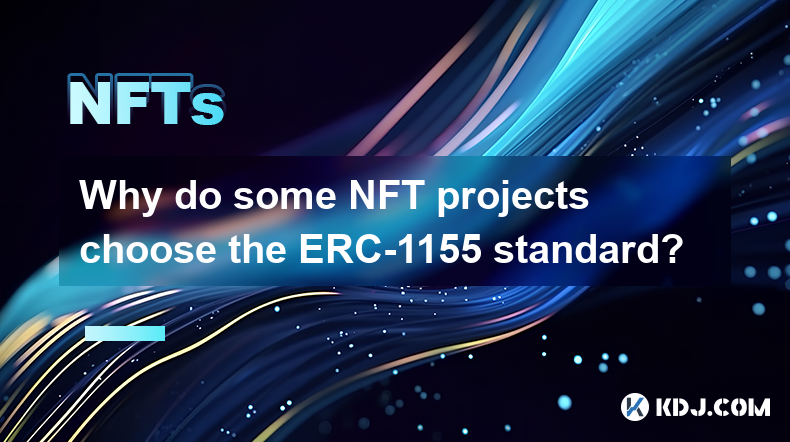
Why do some NFT projects choose the ERC-1155 standard?
Apr 08,2025 at 11:49am
The world of Non-Fungible Tokens (NFTs) has seen a significant rise in popularity and innovation, leading to the development of various token standards. Among these, the ERC-1155 standard has emerged as a versatile and efficient choice for many NFT projects. This article delves into the reasons why some NFT projects opt for the ERC-1155 standard, explor...
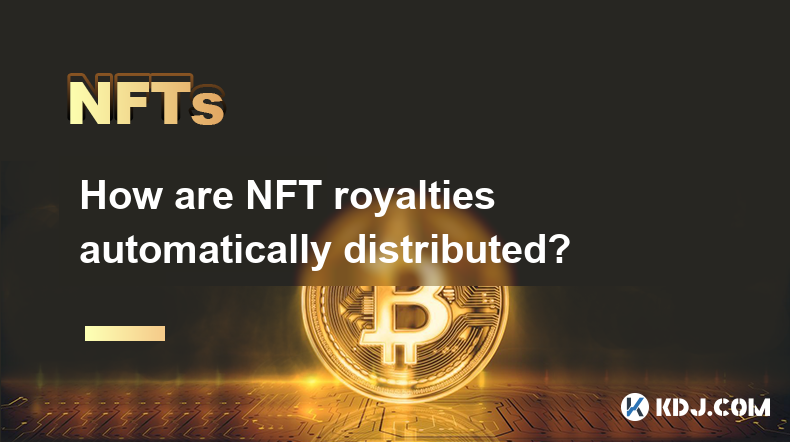
How are NFT royalties automatically distributed?
Apr 08,2025 at 08:14pm
NFTs, or Non-Fungible Tokens, have revolutionized the digital art and collectibles market by providing a way to prove ownership and authenticity of digital assets. One of the most intriguing features of NFTs is the ability to automatically distribute royalties to creators whenever their work is resold. This article will delve into the mechanisms behind ...
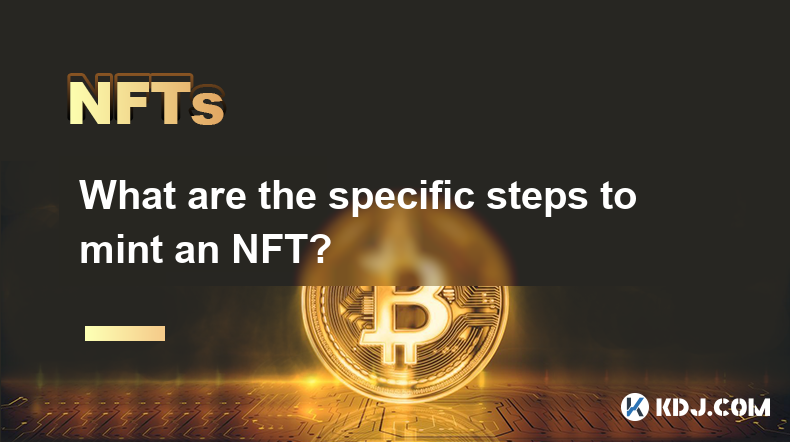
What are the specific steps to mint an NFT?
Apr 08,2025 at 05:22pm
Introduction to NFT MintingMinting an NFT, or Non-Fungible Token, involves creating a unique digital asset on a blockchain. This process allows artists, creators, and collectors to tokenize their work, ensuring its authenticity and ownership. Understanding the steps to mint an NFT is crucial for anyone looking to enter the world of digital collectibles....
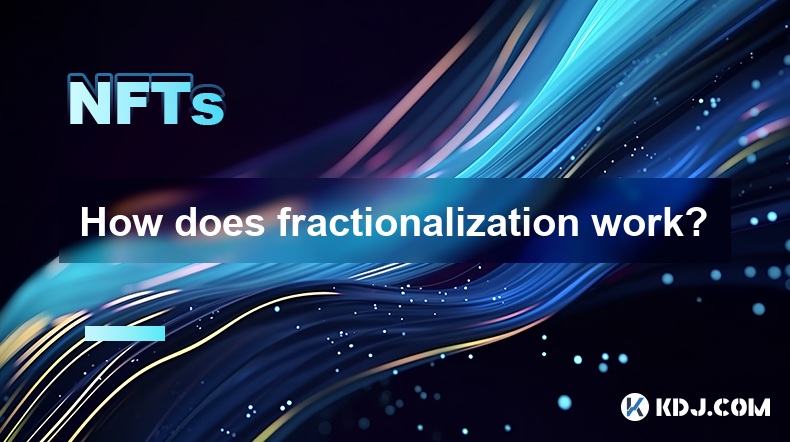
How does fractionalization work?
Apr 08,2025 at 07:42pm
How does fractionalization work? Fractionalization in the context of cryptocurrencies and blockchain technology refers to the process of dividing a single asset into smaller, more manageable pieces. This concept has revolutionized the way investors and users interact with high-value assets, making them more accessible and liquid. In this article, we wil...
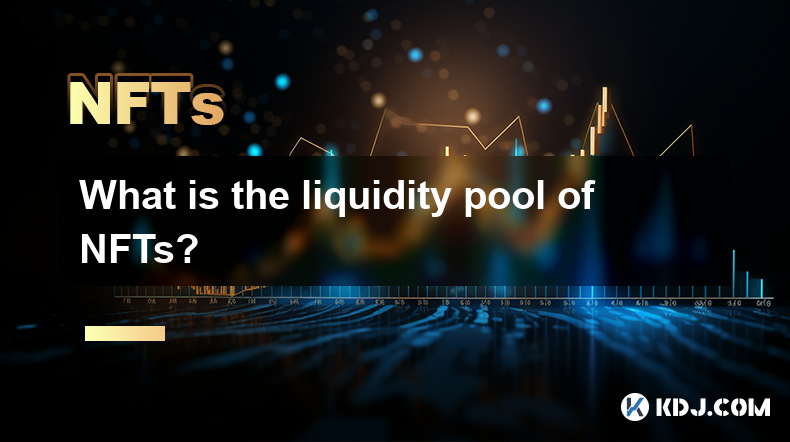
What is the liquidity pool of NFTs?
Apr 08,2025 at 05:35pm
The concept of liquidity pools has become increasingly popular within the cryptocurrency and decentralized finance (DeFi) ecosystems. While traditionally associated with token swaps, the idea has extended to the realm of Non-Fungible Tokens (NFTs). Liquidity pools for NFTs are mechanisms that facilitate the trading and exchange of these unique digital a...
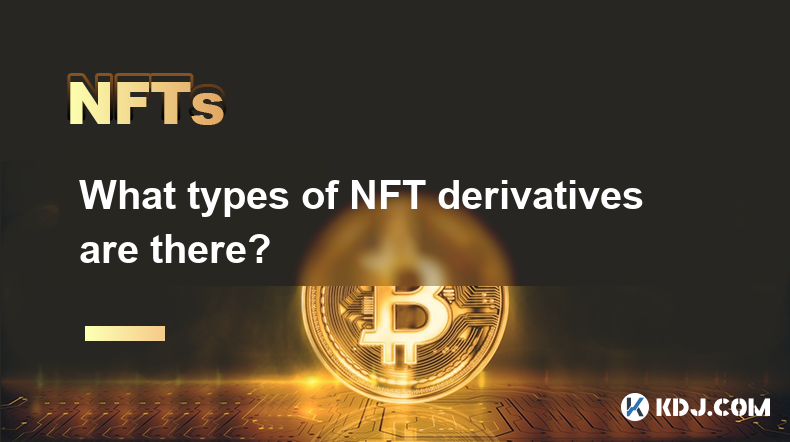
What types of NFT derivatives are there?
Apr 09,2025 at 02:14pm
Introduction to NFT DerivativesNFT derivatives are financial instruments that derive their value from the underlying non-fungible tokens (NFTs). These derivatives have gained popularity in the cryptocurrency space as they offer new ways for investors to engage with NFTs without directly owning them. In this article, we will explore the various types of ...

Why do some NFT projects choose the ERC-1155 standard?
Apr 08,2025 at 11:49am
The world of Non-Fungible Tokens (NFTs) has seen a significant rise in popularity and innovation, leading to the development of various token standards. Among these, the ERC-1155 standard has emerged as a versatile and efficient choice for many NFT projects. This article delves into the reasons why some NFT projects opt for the ERC-1155 standard, explor...

How are NFT royalties automatically distributed?
Apr 08,2025 at 08:14pm
NFTs, or Non-Fungible Tokens, have revolutionized the digital art and collectibles market by providing a way to prove ownership and authenticity of digital assets. One of the most intriguing features of NFTs is the ability to automatically distribute royalties to creators whenever their work is resold. This article will delve into the mechanisms behind ...

What are the specific steps to mint an NFT?
Apr 08,2025 at 05:22pm
Introduction to NFT MintingMinting an NFT, or Non-Fungible Token, involves creating a unique digital asset on a blockchain. This process allows artists, creators, and collectors to tokenize their work, ensuring its authenticity and ownership. Understanding the steps to mint an NFT is crucial for anyone looking to enter the world of digital collectibles....

How does fractionalization work?
Apr 08,2025 at 07:42pm
How does fractionalization work? Fractionalization in the context of cryptocurrencies and blockchain technology refers to the process of dividing a single asset into smaller, more manageable pieces. This concept has revolutionized the way investors and users interact with high-value assets, making them more accessible and liquid. In this article, we wil...

What is the liquidity pool of NFTs?
Apr 08,2025 at 05:35pm
The concept of liquidity pools has become increasingly popular within the cryptocurrency and decentralized finance (DeFi) ecosystems. While traditionally associated with token swaps, the idea has extended to the realm of Non-Fungible Tokens (NFTs). Liquidity pools for NFTs are mechanisms that facilitate the trading and exchange of these unique digital a...

What types of NFT derivatives are there?
Apr 09,2025 at 02:14pm
Introduction to NFT DerivativesNFT derivatives are financial instruments that derive their value from the underlying non-fungible tokens (NFTs). These derivatives have gained popularity in the cryptocurrency space as they offer new ways for investors to engage with NFTs without directly owning them. In this article, we will explore the various types of ...
See all articles





















































































